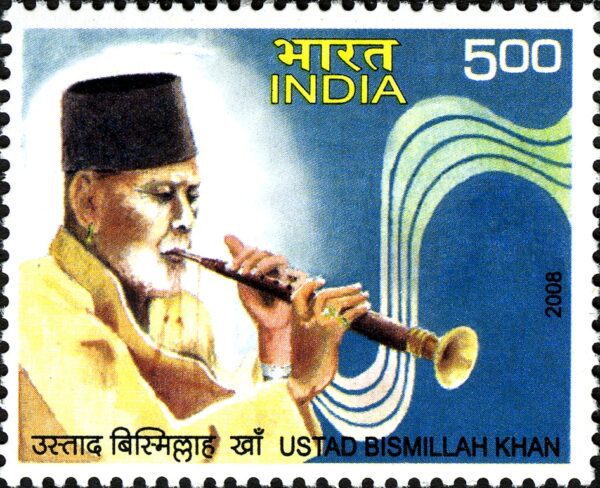Musical instruments are any equipment used to create musical sounds. According to how they make sound, these instruments can be broadly categorized as percussion, stringed, keyboard, wind, and electronic. Musical instruments have a rich and varied history in India, where many have been used for centuries.
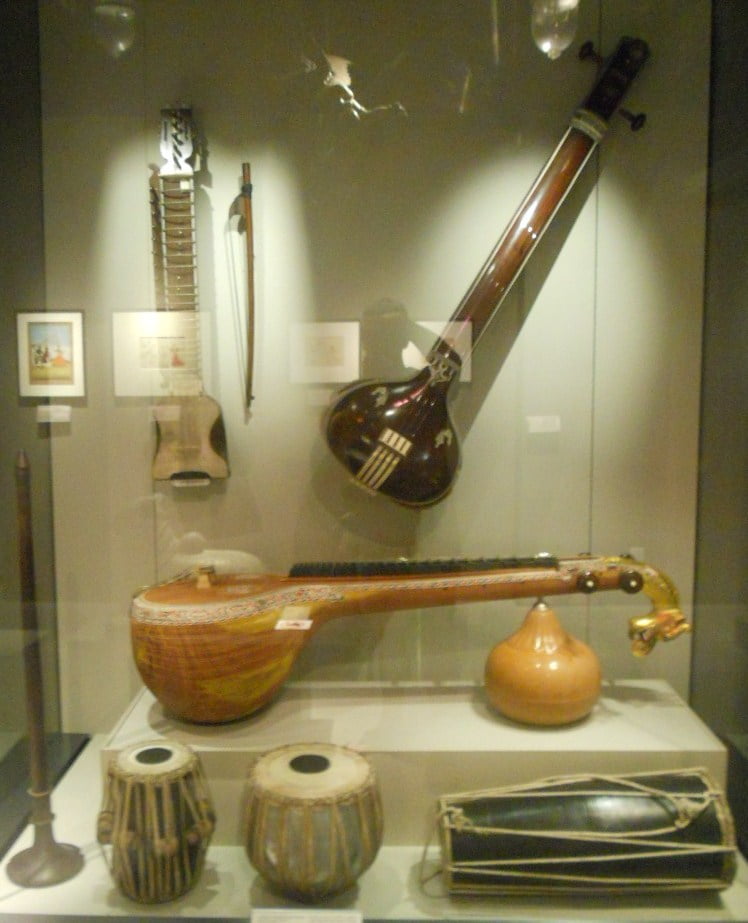
These instruments have been used in soundtracks for movies, television shows, and classical, folk, and popular music. This article will bring ten instrument devices, ranging from Tabla and Sitar to Bansuri, Sarangi.
1. Tabla : Dayan and Bayan, the Indian small Drums
India’s most well-known musical instrument, the tabla, consists of two small drums. It is a percussion instrument that is frequently used in both popular and religious music from the Indian subcontinent and in Indian classical music. The tabla, regarded as one of the world’s most versatile and expressive instruments, is an essential component of the musical tradition of the Indian subcontinent.
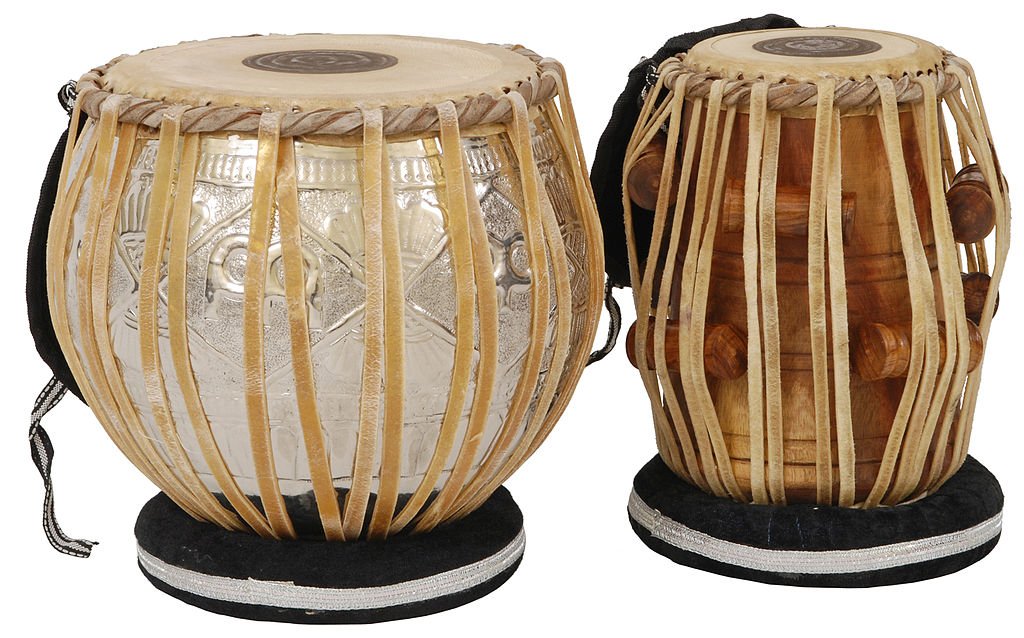
The Dayan (sometimes referred to as the tabla or Bayan) and the Bayan are the two drums that make up the tabla (also known as the dagga or dagga). The Dayan is a little, circular drum with a black head made of wood or metal. The baya is a sizable wooden or metal drum with a bottom metal ring.
A leather strap holds the two drums in place and covers them with a thin skin, typically made from goat or calfskin. Using a variety of techniques, the tabla is played with the hands to produce various pitches, sounds, and rhythms. The primary method, known as bol, involves striking the drums in a specific rhythm. Finger slapping, pressing, and tapping are additional methods. Dayan is played with the right hand, while Bayan is played with the left hand.
2. Sitar : A very popular for a stunning classical composition
Hindustani classical music is played on the stringed Indian sitar. It typically consists of teak wood and has a long neck and a resonator shaped like a gourd. It is played with a mizrab, a wire pick, and has 20 to 21 strings, 6-7 as the main and the rest as sympathetic strings.
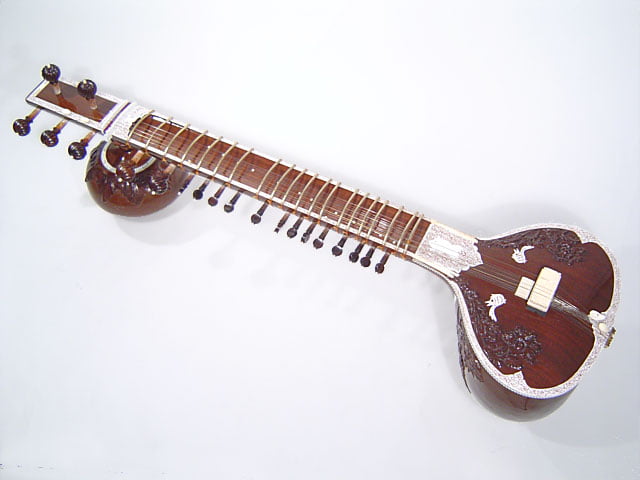
The Indian Sitar is a well-known instrument used for centuries to produce stunning performances and classical compositions. It is an essential component of Indian classical music and is well-known worldwide for its distinctive sound. The sitar is a stringed instrument with numerous frets and a resonating chamber made of a gourd that has been hollowed out. The plectrum, or mizrab, is used to play the metal strings. The instrument can be tuned to any scale because the frets can be moved.
The sitar is typically played in conjunction with vocal music but can also be played by itself. It is used in Hindustani classical music, Bhajan, and Qawwali, among other traditional Indian music genres. Plucking the strings creates the sitar’s sound, which is frequently accompanied by an additional instrument like a tabla or tanpura. The sitar was first brought to the West at the end of the 19th century.
3. Harmonium: An instrument for improvisation and composition
Indian music relies heavily on the Indian harmonium, which has been used to produce some of the world’s most stunning and distinctive sounds. It has a keyboard and foot-operated bellows in the back, making it a free-reed instrument similar to the accordion. The instrument is still in use today and has been used for centuries in Indian classical, folk, and religious music. There are two main parts to the Indian Harmonium: the keyboard and the reeds. The reeds are tuned to specific tones and can be made of bamboo, steel, or brass. The keyboard, used to play the reeds’ notes, is typically made of wood or plastic. A harmonium, tabla, and sitar are frequently used together to produce a beautiful and complex sound.
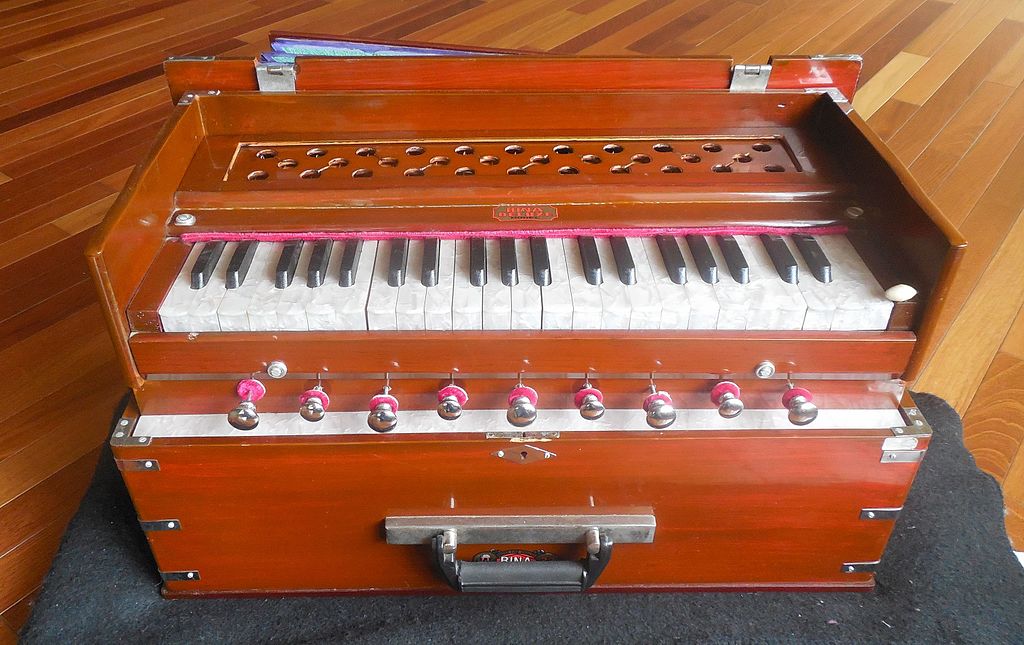
A harmonium is an excellent tool for improvisation and composition, as it can be used to create a wide range of sounds. It can be used to create a single drone or a full harmony of notes. The instrument is also versatile enough to be used in a variety of settings, from a solo performance to a large ensemble.
Read – 4 Major Similarity and Difference between Indian Classical and Carnatic Music
4. Dhol
The Indian Dhol is an instrument that has been utilized in India for a really long time. It is a double-sided wooden drum with a skin that is stretched across both sides. The dhol is frequently used in Bhangra and other folk music, as well as traditional Indian music. Most of the time, the instrument is played with two sticks, one for each hand. In traditional Indian music, the dhol is an essential instrument.
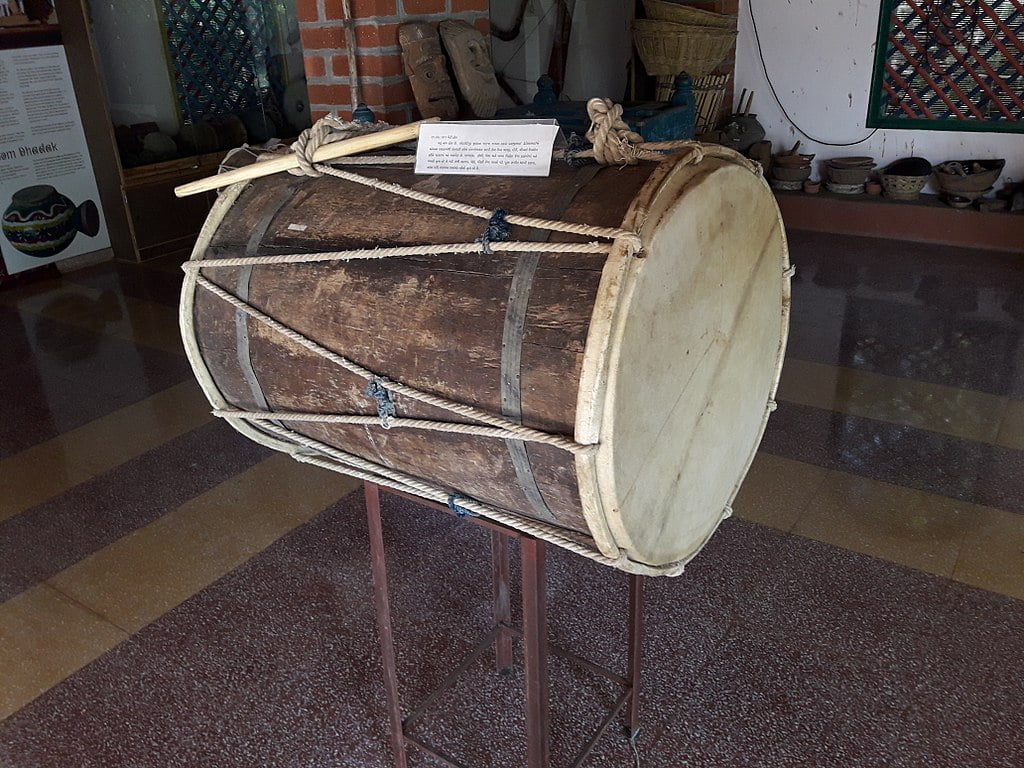
It is utilized to establish the rhythm and provide musicians, dancers, and singers with accompaniment. The dhol is frequently played in folk, classical, and other musical styles. The dhol, for instance, is used to set the dance’s beat in Bhangra. The dhol is a significant piece of Indian culture. Weddings, religious celebrations, and other special occasions frequently include its use. Performing at festivals and other events, many Indian musicians specialize in playing the dhol. The dhol is even used to accompany traditional Indian dance in some areas..
5. Bansuri : A single-ply bamboo fluite
An ancient Indian wind instrument is the Bansuri. It is a single-ply bamboo flute that is used in Indian music. The Bansuri is a vertical side-blown flute with six or seven finger holes and a range of two and a half octaves. The Bansuri is frequently used in devotional, folk, light, and Hindustani classical music. The Bansuri is a significant component of Indian culture and is utilized in numerous Hindu rituals and ceremonies.
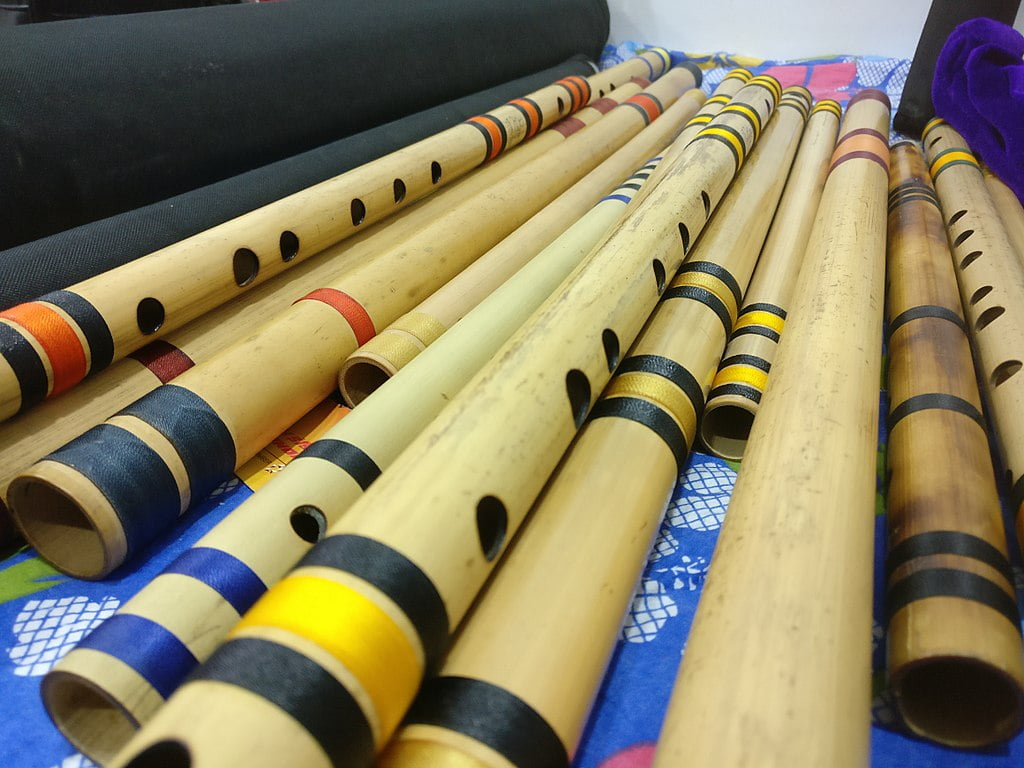
The flute is said to represent Vayu, the god of the wind,’s divine power. The Bansuri has a long history in India, and the Rig Veda, the Mahabharata, and the Ramayana mention the flute. The Bansuri is a versatile instrument that can be played to play various music, including Bollywood songs, devotional music, and even light classical music like Indian classical music. Folk music also makes use of it, and there are many different ways to play the Bansuri
6. Sarangi : My favourite Indian Musical Instrument
India’s traditional bowed string instrument is the Sarangi. It is still a popular instrument today and is thought to have originated in the Middle Ages. The Sarangi is an Traditional Indian Musical Instrument with a hollow body, three main strings, and up to thirty-five sympathetic strings that are tuned to the main strings. It has a short neck. The Sarangi, which is typically played with a bow, produces a rich, soulful sound that is ideal for playing traditional Indian melodies or accompanying vocalists. In India, the Sarangi has had a long and distinguished history.
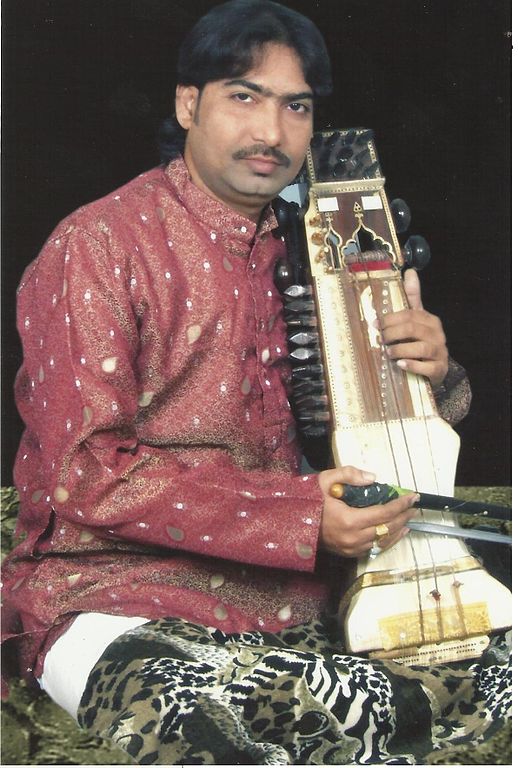
In the past, it was used as a solo instrument to accompany singers at religious ceremonies. Different melodies and rhythms were used to convey messages, and it was also used as a means of communication between towns and villages. The Sarangi is an extremely versatile instrument that can be played in various musical styles, including contemporary Western classical music and traditional Indian folk music. It is an excellent accompaniment for many different kinds of music due to its distinctive sound and range of tones. The Sarangi has a delicate and intricate design that can make it hard to play. Mastering it takes a lot of skill and practice. Consequently, professional musicians use it most.
7. Shehnai : An Instruments of wedding and rites
The ancient Indian wind instrument known as the Shehnai is thought to have its origins in the Vedas. It has a conical bore and a flared bell at the end, and it is a double-reed instrument made of hollow bamboo or cane. It is regarded as an instrument of good fortune and is typically played in pairs. The Shehnai is frequently associated with weddings and other special occasions because it was traditionally used in temple and court music.
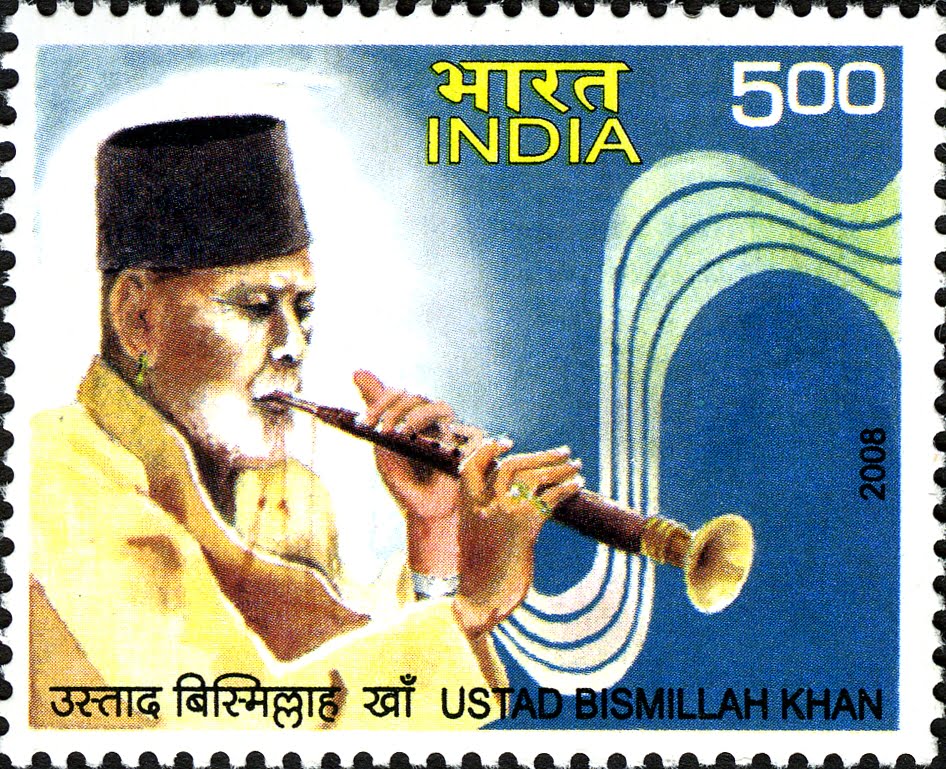
It is regarded as a sign of celebration and is thought to bring prosperity and good fortune. It has a sound that is often compared to a flute and is played with a bow. The Shehnai can play melodic and rhythmic patterns and has a range of two and a half octaves. Singing, dancing, and other forms of performance can all benefit from its accompaniment. It is also used to go along with folk music, like the Punjabi Bhangra and Dandiya dances. In India and other parts of the world, the Shehnai is still widely used today. It is also played in a variety of contemporary genres and is regarded as a significant component of the Indian classical music tradition.
8. Santoor: A Musical Instrument from Kashmir Valley
The Santoor is an Indian stringed musical instrument from the Kashmir Valley. A hammered dulcimer is a type of zither with a large, rectangular frame made of wood over which a string set is stretched. Two light wooden mallets known as “mezrabs” are used to pluck or strum the strings, which are typically made of brass, bronze, or steel. The Santoor is a centuries-old instrument used in Kashmiri music for centuries. It is thought that Persian musicians brought it to the area, and it has since become a popular instrument in many parts of India. It is utilized extensively in Indian classical music, regional folk music, and film music, among other genres.
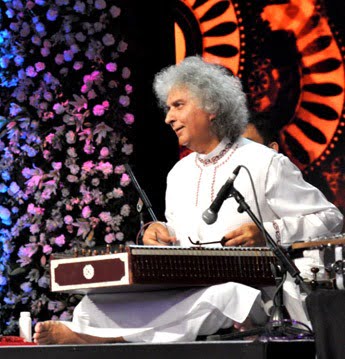
Most of the time, the Santoor is played horizontally, with the player sitting cross-legged on the ground and holding the instrument between the knees. The bass and treble strings are on the left and right, respectively, of the two rows of strings. The mezrabs are then used by the player to pluck or strum the strings in a variety of ways.
9. Duggi: A rare Indian classical music
In India’s Rajasthan and Gujarat, the Indian Duggi is a traditional Indian musical instruments. Two sticks are used to play this type of hand drum. It is believed that the Middle East is where the instrument, which is also referred to as a “daf” or a “don,” was first developed. The duggi is made of goat skin that has been hollowed out and stretched over a wooden frame. It has a circular shape. It has two smaller heads on either side of the central head that are connected by a metal hoop.
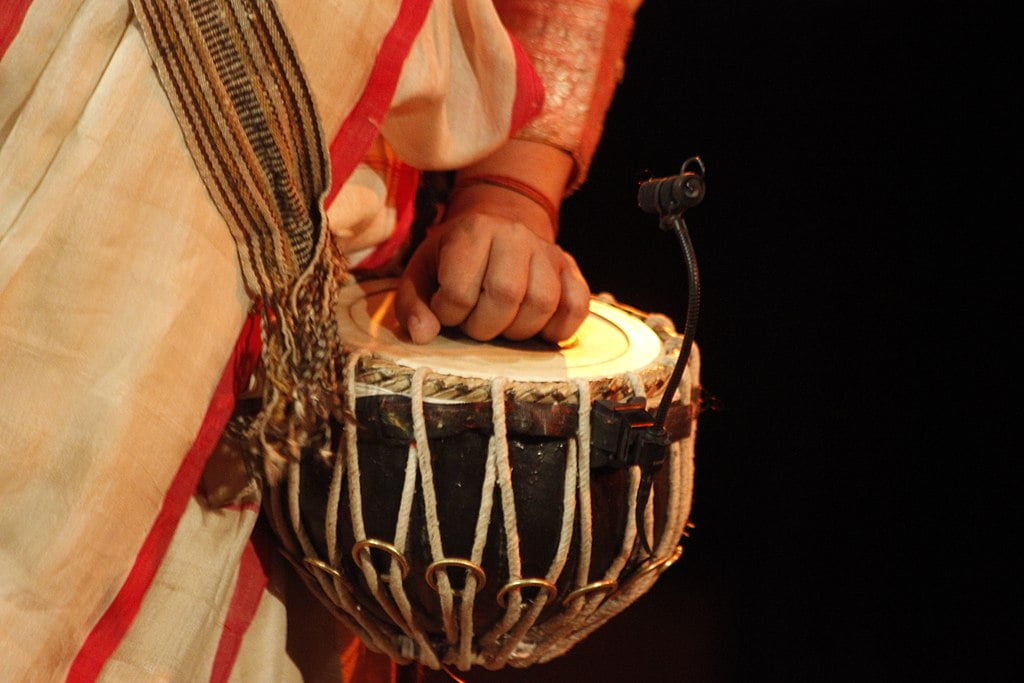
The central head is the only one. Two short sticks are typically used to play the instrument, but some players use their hands. The duggi has a distinctive sound that can be tuned to a variety of tones. In Rajasthan and Gujarat, it is used to accompany dancing and singing, and it is frequently used in traditional wedding ceremonies. It is also used to accompany popular music as well as folk and classical music. Depending on the type of music being played, the duggi can be tuned in a variety of ways. For instance, it is frequently tuned to the singer’s vocal range when it is used to accompany singing.
10. Ektara : Also called Tambura – A Traditional Indian Musical Instrument
The Indian subcontinent’s traditional Hindustani classical music and folk songs are played on the one-stringed ektara. Depending on the region, it is also known as a tambura or dotara. The ektara is typically adorned with ornamental cloth and is typically constructed from a single piece of bamboo with a gourd resonator. The ektara is a versatile instrument that can be played solo or in a group..
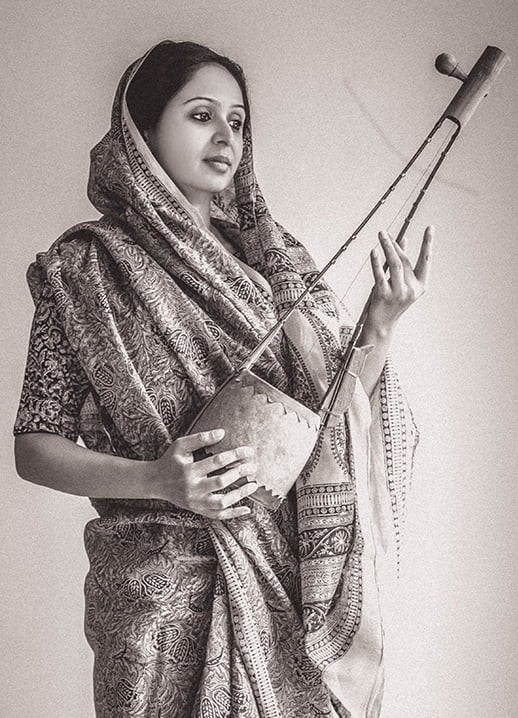
It is typically played with a plectrum made of bamboo, plastic, or metal and tuned to the raga’s tonic. The ektara can provide both melodic lines and a drone accompaniment to songs. In India, the ektara is a long-established instrument. It is thought to have come from the Middle East and was brought to India by the Moghuls during their 16th-century rule. Since then, the ektara has been used in many different kinds of music in India and nearby countries.

